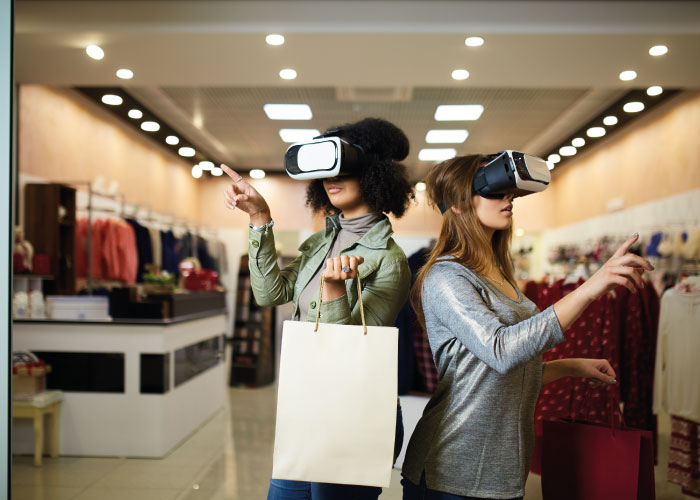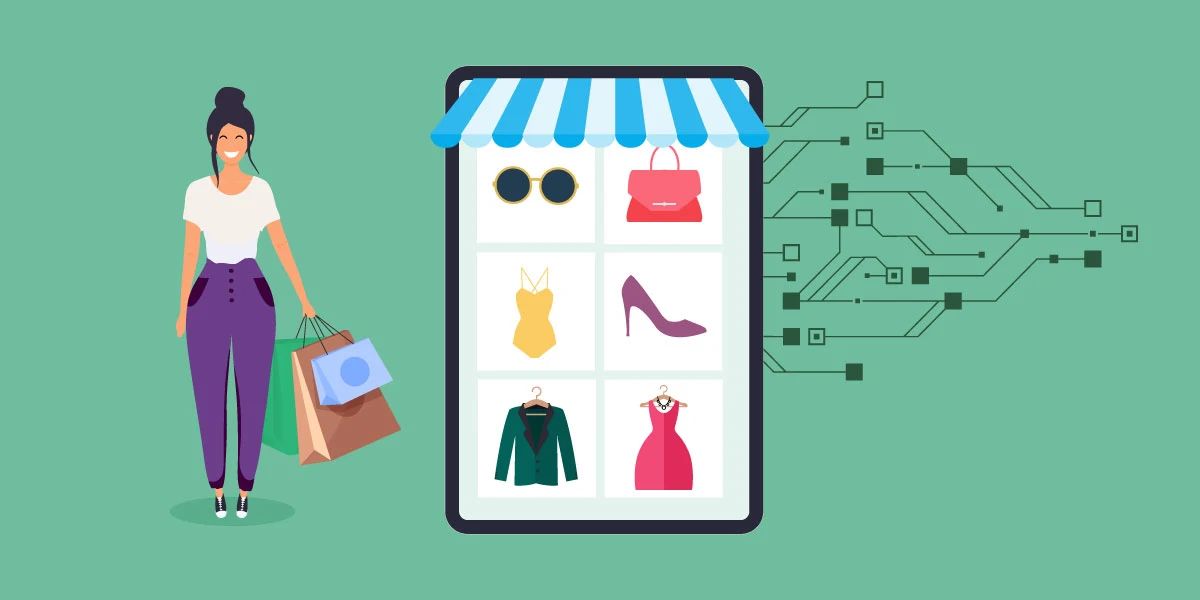All machine learning is AI, but not all AI is machine learning.
AI= Artificial Intelligence
AI is the ability of computer programs and robots to imitate humans’ intelligence and behaviour, whether or not it learns for itself. For example: understanding natural language, voice recognition, fraud detection, recommendation engines and so on.
AI is nothing new, it has been around for quite a long time.
We may not think about it that much, but AI plays a big role in everyday life for most of us. Some examples are in e-commerce, marketing, digital personal assistants in our smartphones, and smart gadgets in our homes.
ML= Machine learning
Machine learning is a sub-field of AI and data science, which is based on learning algorithms. They can make predictions regarding future outcomes without having been programmed specifically with that scenario in advance.
Machine learning is the part of AI that helps machines learn and understand on their own and can be likened to our human brain.
An example of AI that is not machine learning is an ‘expert system’, which gives an answer based on evaluation of some data points, but does not learn to give better answers in the future. This might include medical diagnosis.
Both AI and ML are constantly evolving. The important thing is understanding that these techniques can be applied to solve a business problem, as long as there is data to train them.
Are you worried that AI will take your job? Don’t be.
There is a fundamental truth about AI: it can’t operate in a vacuum. It requires humans to develop, manage, deploy, and maintain it. That means jobs, for humans.
Despite all its intelligence, AI isn’t always right. AI can go wrong, catastrophically wrong. When that happens, a human, with intuition, experience, and the ability to react quickly, is invariably needed to overcome the problem.
AI tools often don’t even know they have made a mistake, which requires even more work from a human who can figure out how to prevent them.
AI and Machine learning for e-commerce
A good AI solution that incorporates machine learning will improve your customer experience, and help you lift conversion, revenue, and profit significantly. Online retailers can automate the workload and remove much of the manual heavy lifting by using AI for e-commerce sites. AI reacts faster than any human can catch both micro and macro trends.
The AI learns from visitors’ behavior in real-time – and so incorporates machine learning – anticipating the visitors’ intents, and adapts the results to rank the most relevant products higher, maximizing your sales.
Personalization is the key
Today, consumers have higher demands on how they should be treated while shopping online. It is not enough to treat all consumers in the same way; each wants a personalized experience – or rather, each wants results dedicated to their own needs. It is that kind of personalization that keeps a customer loyal to your brand. If you can’t provide it, they will find a competitor who can.
Make sure that you offer the best possible buying experience to your customers, by using AI. Chatbots and AR are two examples of how AI can help you improve your customers’ experiences on your e-commerce site.
E-commerce Chatbots
Chatbots are a useful service for online shoppers. They can, for example, help to inform customers when products are out of stock and suggest alternatives. They can also be used to inform customers about delivery, order status or even suggest products based on what the customer is looking for.
Another benefit of using chatbots in e-commerce is the functionality to remind customers about their abandoned shopping carts. Some customers don’t abandon their carts on purpose but if that happens, a chatbot is a good way to inform them of their shopping cart status and help them complete the purchase.

Statistics
68% of respondents are more likely to buy from a business that offers convenient communications.
According to IBM, chatbots can reduce customer service costs by 30%.
Research from Juniper found that the retail sector might benefit most from chatbot technology, estimating that by 2023 over 70% of chatbots accessed will be retail-based. Juniper cited benefits such as cost savings, up-selling, marketing, and cart recovery as major retailer chatbot ‘push’ factors.
Augmented reality and e-commerce
With the help of interactive visual design such as Virtual Reality (VR), Augmented Reality (AR), and 3D imagery, the customer can get a better sensory experience and a better understanding of what to expect with their product while shopping online.
According to marxent labs, By 2020, AR was believed to have generated $120 billion in revenue.
They also report that:
- 77% of shoppers want to see product features like colours or style.
- 72% of shoppers purchased items they had not planned to purchase because of Augmented Reality.
- 68% of shoppers spent more time with products when AR was available.
- 65% want product information through AR.
- 61% of shoppers prefer retailers that offer AR over those that don’t.
- 55% say AR makes shopping fun.
Product types that U.S. internet users want to shop using AR:
- 60% Furniture
- 55% Clothes
- 39% Foods and beverages
- 35% Footwear
- 25% Cosmetics
- 25% Jewelry
- 22% Toys

E-commerce businesses that use Augmented Reality
One area that benefits using Augmented Reality in e-commerce is for items where aesthetics or other physical traits, such as size, are primary factors driving the purchase decision for the customer.
Several online retailers are using Augmented Reality to improve the shopping experience for their customers.
Here are some examples:
- Ikea’s app Place: Ikea’s app Place lets you virtually “place” IKEA products in your space.
- Nike Fit: Using your smartphone’s camera, Nike Fit scans your feet, collecting 13 data points mapping your foot morphology for both feet. Once the scan is complete, your unique foot dimension can easily be used for future online and in-store shopping at Nike.
- Warby parker’s virtual try-on: Virtual Try-On is a feature in the Warby Parker iOS app that allows you to virtually try on eyeglasses and sunglasses.
- Sephora Virtual Artist: Sephora Virtual Artist app uses facial recognition to empower customers to try on makeup products
4 reasons why you should use Machine Learning on your e-commerce site:
1. Increased conversions
Turning window shoppers into buyers is always the main goal for any e-commerce site.
Machine learning algorithms can deliver smarter search results. They can understand what is typed in the search bar, thanks to natural language processing. After that, they will use what they have learned from previous searches to show what the searcher wants to find.
Algorithms can analyse visitors’ behaviour on an e-commerce site, and recognise products that a visitor buys, or browses. That way, when an individual returns to the site, they get product recommendations based on what they have shown interest in before.
2. Decreased bounce rate
Navigation can help increase the average time spent on your site. An easily navigable e-commerce site increases the time a visitor remains on your site. This allows visitors more time to explore and discover your e-commerce site and get the information that they will need. Visitors should quickly understand what you are offering, without having to scroll and click too much. If a potential customer visits your e-commerce site and finds that it is too difficult to navigate, they may not take the time to go through the site properly. They may bounce and search for another e-commerce site instead.
3. Higher conversion rate using A/B tests
A/B testing means that visitors view 1 of 2 different versions of a page. One is called the A version and the other one is called the B version. They usually have slightly different designs or some other differences.
You collect data from real visitors during the test; that way you can clearly measure which of the page versions converts best. This is a very powerful approach for increased conversion, as you will find which design solutions give the best results. This process is much easier with help from AI and machine learning; the optimal version can be found much faster by AI having the power to include many differences served in the same version to customers and evaluating the results.
4. Boosted conversion and engagement
One picture says a thousand words, it is usually said. Visual search is a novel technology, powered by AI, that allows the user to perform an online search by employing real-world images as a substitute for text. Visual search optimization boosts conversion and engagement. The customer experience can be much better if you offer an image-based search where users can use images to search for other similar products. That way, customers can quickly find what they’re looking for.








